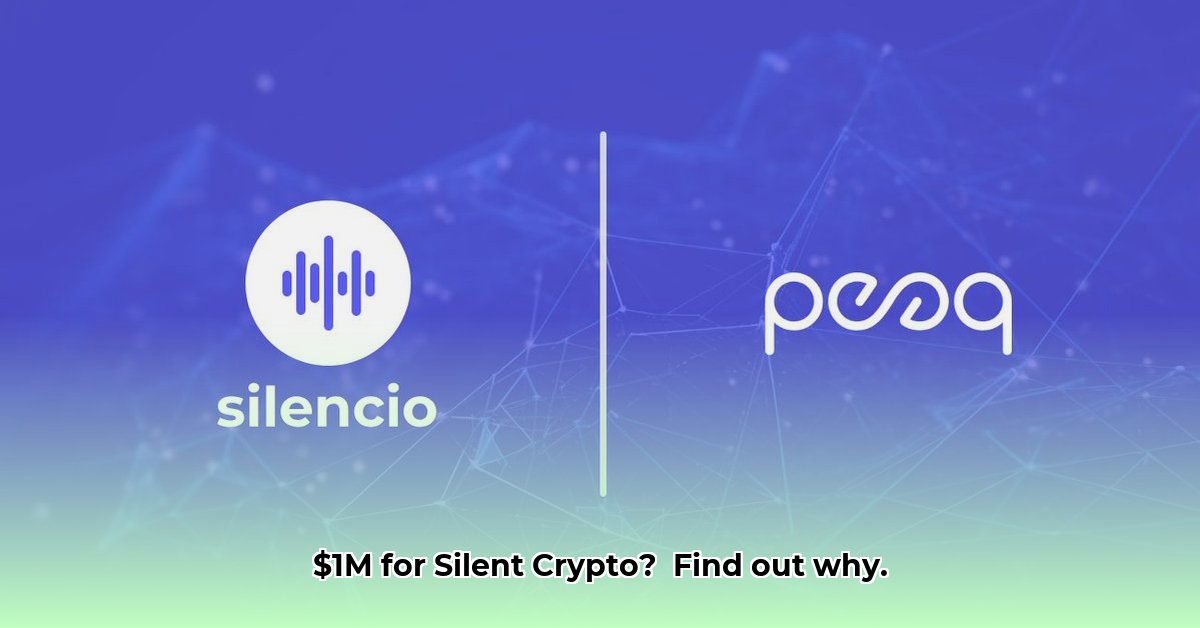
Technology Overview: Smartphone Sensors and the SLC Token
Silencio Network leverages the ubiquitous microphones embedded in smartphones to create a decentralized noise pollution monitoring system. Millions of smartphones act as a distributed sensor network, collecting ambient noise data. This data is then aggregated and analyzed to produce detailed noise pollution maps, offering granular insights into urban and regional noise levels. How does this work? The fundamental principle is to use readily available technology to crowd-source environmental data.
The system's functionality is underpinned by the SLC token, a cryptocurrency that incentivizes user participation. Users who contribute their smartphone data are rewarded with SLC tokens. These tokens also play a crucial role in validating data accuracy and maintaining the network's integrity. This creates a positive feedback loop: users contribute, get rewarded, and simultaneously improve the quality of the data for everyone. The SLC token's economic mechanism, however, is subject to market forces and the success of the overall network. Is this a sustainable model for long-term growth? That remains to be seen.
Market Analysis: Early Success and Future Potential
Silencio Network's recent $1 million pre-seed funding round signals significant early investor confidence in its decentralized approach to environmental monitoring. This is a strong indicator of the potential within the burgeoning market (1). However, it is important to note its relatively low market capitalization. This suggests significant price volatility in the early stages and signifies considerable risk. The long-term viability will depend on factors such as user adoption, data accuracy, and sustained market interest. A major question to consider is whether the innovative technological approach can sustain its momentum against potential competitors.
Data Accuracy and Scalability: Addressing Critical Challenges
The accuracy of smartphone-collected noise data is a major challenge. Microphone quality variations, background noise interference, and user phone placement all affect data reliability. Silencio must implement robust data validation and cleaning algorithms to filter out inaccuracies and ensure data quality. Can they achieve sufficient accuracy at scale?
Another critical hurdle is scalability. Managing the massive influx of data from millions of potential users requires efficient algorithms and robust infrastructure. The network's ability to scale its data processing capabilities will be a significant factor in determining its long-term success. Without efficient processing, will the network become bogged down and unresponsive?
Regulatory Compliance: Navigating Data Privacy Concerns
The use of smartphone data necessitates strict adherence to data privacy regulations, including GDPR (General Data Protection Regulation) and CCPA (California Consumer Privacy Act). Silencio must be transparent about its data collection and usage practices and obtain explicit user consent. Maintaining compliance is crucial for building user trust and ensuring the long-term sustainability of its project. These regulations are complex and constantly evolving; this makes compliance both expensive and challenging.
Risk Assessment Matrix: Analyzing Potential Threats and Mitigation Strategies
The following matrix outlines key risks and proposed mitigation strategies.
| Risk Factor | Likelihood | Impact | Mitigation Strategy |
|---|---|---|---|
| Inaccurate Data | Moderate | High | Robust data validation; sophisticated data cleaning algorithms; quality control measures |
| Network Scalability Issues | Moderate | High | Phased network rollout; investment in cloud infrastructure; efficient data processing algorithms |
| Regulatory Non-Compliance | Moderate | High | Proactive legal counsel; robust data privacy protocol; transparent data usage policies |
| Intense Market Competition | Moderate | Moderate | Focus on specific niche applications; unique data analysis approach; strategic partnerships |
| Fluctuating Token Price | High | Moderate | Exploration of diversified revenue streams; community building strategies; token utility expansion |
Actionable Insights: Strategies for Key Stakeholders
The following table outlines actionable steps for different stakeholders.
| Stakeholder | Short-Term Actions | Long-Term Actions |
|---|---|---|
| Silencio Team | Rigorous data validation; system refinements; securing additional funding; implementing robust data privacy protocols | Strategic partnerships; international expansion; diversifying revenue streams (data licensing, etc.); exploring mergers and acquisitions |
| Investors | Continuous monitoring of user adoption; data analysis to understand market value; monitoring regulatory compliance; analysis of the token economy | Assessment of scalability and profitability; considering future investments based on market traction and data value |
| Municipalities/Governments | Pilot programs; careful monitoring of compliance | Integration into noise pollution management strategies; using data to inform policy decisions |
| End-Users | Clear education on privacy concerns; straightforward communication about data usage | Providing incentives (rewards, token incentives); ensuring strong data security |
Conclusion: Potential and Pitfalls of Silencio Network
Silencio Network offers a potentially transformative solution to urban noise pollution. Its success, however, depends on overcoming significant technical and regulatory hurdles. While the pre-seed funding demonstrates early confidence, the project faces considerable risks, particularly concerning data accuracy, scalability, and regulatory compliance. The future of Silencio Network remains uncertain, requiring continuous innovation and adaptation to succeed in the competitive technological landscape.
(1) Further research into the market size and potential for decentralized environmental monitoring solutions is recommended.